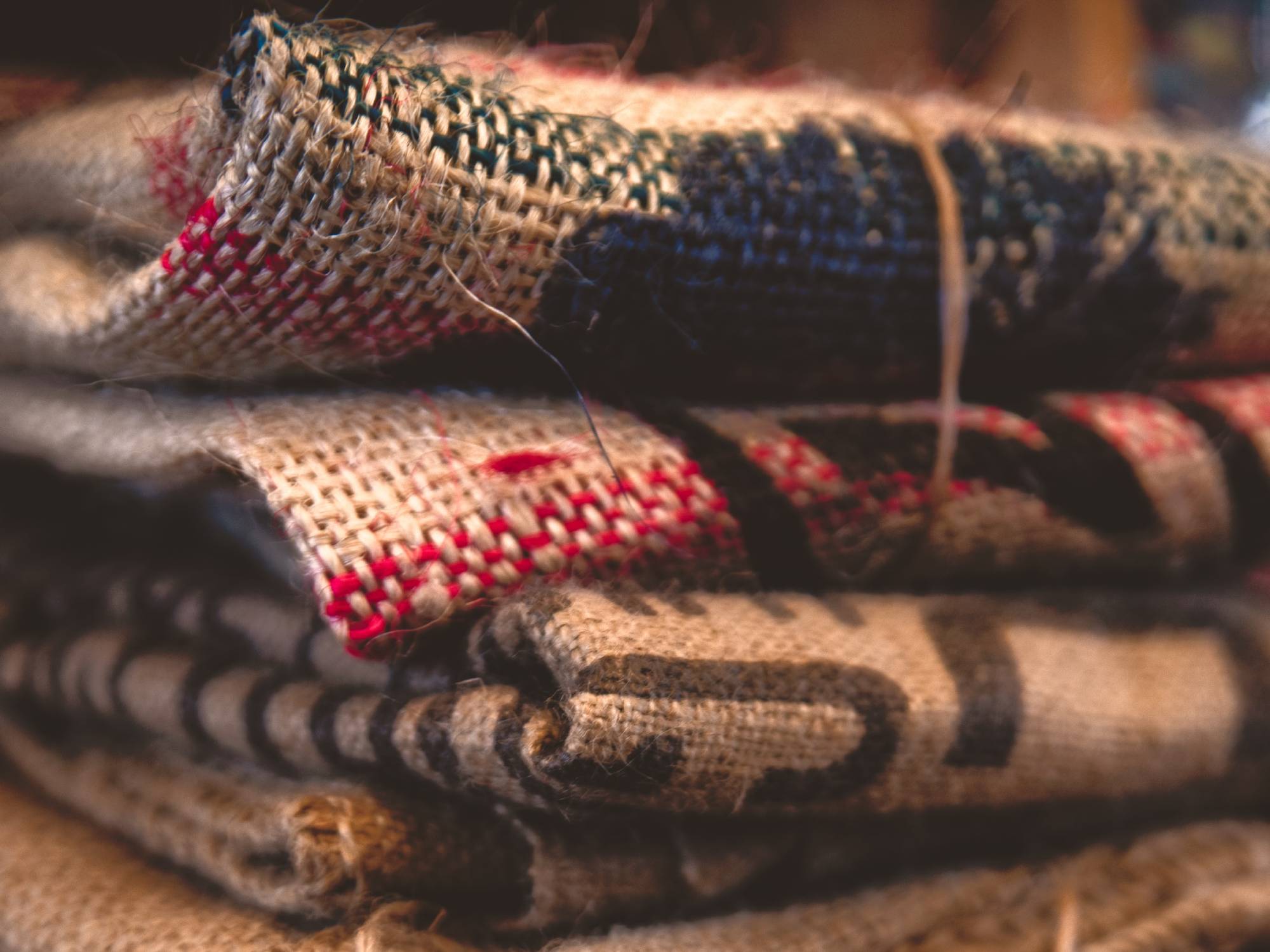

Fresh coffee goes stale too fast to travel far. The beans in that daily espresso you get from your local shop were probably roasted just a few miles down the road—or even in the shop itself.
Your local independent roaster is probably buying big bags of raw coffee from Asia, South America, or Africa, and the burlap bags it comes in—produced by the millions each year—are mostly a waste product. Unless someone does something with them.
Where to find coffee sacks
The simplest way is to ask at a local café that roasts their own beans. Each sack makes around 700 standard cups of coffee, if you were wondering—so even micro-roasters go through a couple of them a week.
Some roasters will happily give you a few sacks for free, especially if you’re a customer. Other slightly more enterprising cafés will charge a couple of bucks for each one or ask for a donation to charity. As a ballpark, the standard price sits somewhere around $1 and $2 per sack—I paid less than $10 to have four of them shipped to my door, so if you’re spending more than that you’ll probably want to check other shops for a better deal.
If you’re visiting your roaster in person, you’ll likely be able to pick out whatever sacks you want, but if you buy them online, you’ll probably just get a random assortment. If you need to calculate a specific amount of raw material for a project, don’t worry—the size is pretty standard (about 38 by 26 inches) so the biggest difference will be the designs printed on the front.
How to clean a jute sack
By the time you get them, your coffee sacks will have travelled halfway around the world, if not further, so don’t be surprised if they are hard-used, wrinkled, and a bit dirty. Depending on what you want to do with them, you’ll likely want to give them a wash first.
The loose hessian weave of most coffee sacks won’t survive the washer and dryer, so the best thing to do is hand-wash them in soapy water and leave them to hang dry.
To eliminate any wrinkles, grab an iron and work out any creases on the highest setting—it’s not a light fabric so it can take a few passes.
What to do with coffee sacks

Coffee sacks are a great source of burlap, which you can use for pretty much anything you can imagine. But they don’t just have to be raw material.
Turn them into grow sacks
Burlap is seriously useful in the garden. The hardy material can stand up to the weather while still letting your plants drain. “Gangsta gardener” and master of repurposing, Ron Finley, suggests growing potatoes in them, but he also uses them as a base material in his planter boxes. My girlfriend and I liked how they looked so much, we used them to plant flowers we later put outside the front door.
Build a pet bed
If you want a quick and easy pet bed, it’s hard to beat a coffee sack. Take a clean one, stuff it with a pillow, put it on the ground, and watch your pets flock to it. If you want to take things further, you can sew a zipper to the open side of the sack to seal it up.
Craft a custom tote bag
You can use a coffee sack as the base for any fabric-project you like, but a tote bag might be the simplest. After all, you’re mostly just adding handles. Depending on your level of skill (and access to a sewing machine), you can make a basic tote or go all in and create a gorgeous beach bag. Just make sure to wash your sack first.
Create some decent decor
Coffee bags are marked with the details of their contents and origin. Some of the designs look pretty cool, especially when cleaned up. Just wash, press, and frame a sack to add a special touch to any room in your house. You’ll have to trim a bit off the edges, but a 36-by-24-inch frame will give you the best results.
Organize a sack race
This was my best event on sports day, so I’d back myself in a sack race over anyone—even Usain Bolt. With a couple of spare coffee sacks lying about, you can replace your routine workout with a fun and wholesome race. Find someone to compete with and let the jumping begin.
